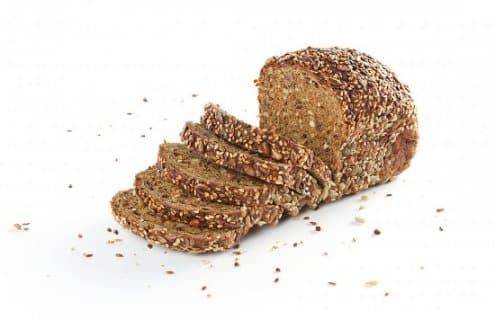Bread is an essential and delicious food that many enjoy on a regular basis. But, if you suffer from Type 1 or Type 2 diabetes, you must be careful when indulging. Bread comprises mainly carbohydrates, which break down into glucose. Because diabetics often have blood glucose levels that are above normal, eating bread may result in a spike in blood sugar levels.
In recent years there’s been a proliferation of specialty food made available, in stores or online, that cater to the diabetic. You can seek out these foods to fit your taste and budget, or you can enjoy certain types of normal bread products, keeping in mind some simple rules to prevent dangerous changes in blood sugar levels.
Keep it Grainy
One of the best pieces of advice for diabetics who want to eat bread is to remember to purchase varieties that are made from whole grains. Heavily processed breads like white bread often contain high quantities of simple starches that break down and enter the bloodstream rapidly.
This phenomenon could possibly trigger a spike in blood glucose levels and the appearance of uncomfortable symptoms. By sticking to whole grains – a good example is whole wheat bread with seeds – the proportion of complex carbohydrates is kept relatively high. This is because whole wheat bread contains all three components of the wheat grain: the germ, the bran and the endosperm.
The glucose within whole wheat bread is released into the bloodstream and metabolized more slowly than that in heavily processed white bread, which does not contain all three components of the grain. This means potentially dangerous spikes in blood glucose can be avoided if you stick to whole wheat bread.
Keep it Mixed
When you’re standing in front of the huge variety of breads that are available at your local grocery store, it’s important to remember that most of the nutrition in bread is in the germ and the bran components.
If you’re eating white bread, you’re forsaking that important nutrition, as well as fibre for regularity. This should be reason enough to steer your cart away from white bread if you suffer from diabetes!
Here are some steps you can take to ensure you’re putting the right type of bread in your shopping basket:
- Look at the nutrition facts before you even consider putting the item in your cart. Choose bread that contains at least 2 grams of fibre per slice. If they have more than that, it’s an even better scenario! Remember, eating plenty of fibre helps to keep you regular and helps your body process toxins. It also helps promote a feeling of satiety so you don’t fill up on foods with empty calories that may cause your blood sugar to spike.
- When comparing different types of bread, stick to brands that contain lower quantities of sugar, fat and sodium. Sugar is quickly metabolized to glucose, and less sugar is generally healthier and less caloric. White bread often contains high levels of sugar, fat and sodium. A reduction in the amount of sodium consumed can help positively regulate blood pressure, which is an important part of maintaining good health for diabetics.
- The serving size per slice of bread varies widely from brand to brand – by sticking to a brand that contains larger-than-average slices, you may be consuming more calories than you intended. According to government guidelines, the average slice of bread should weigh about 30 g and contain 15 g of carbohydrates. Since this can varies between bread brands and types, it may be worth your while to invest in a food scale to more accurately track the calories you are consuming. Closely monitoring food intake is an important part of overall health for diabetics.
Sprouting Up with a New Choice
One type of bread that is growing in popularity and becoming more and more widely available is sprouted bread. These breads are somewhat non-traditional in that they contain no flour. They are made from mixing sprouting grains, beans and seeds in water and moulding the resulting mixture into a paste. When the finished product is prepared, it looks and tastes very much like traditional bread.
Most types of sprouted bread contain a full complement of the amino acids needed for optimal nutrition and an abundance of protein and fibre. You may not like the taste initially because it is a bit firmer than normal bread, but it eliminates the glucose in traditional breads that can cause a blood sugar spike.
Even if you’re diabetic, you can still enjoy the delicious, satisfying taste of a loaf of bread. Steer away from white and heavily processed breads, opting instead for whoole wheat and whole grains. Once you find a bread you like in this category, enjoy it – while being mindful of exactly what and how much you are eating.


